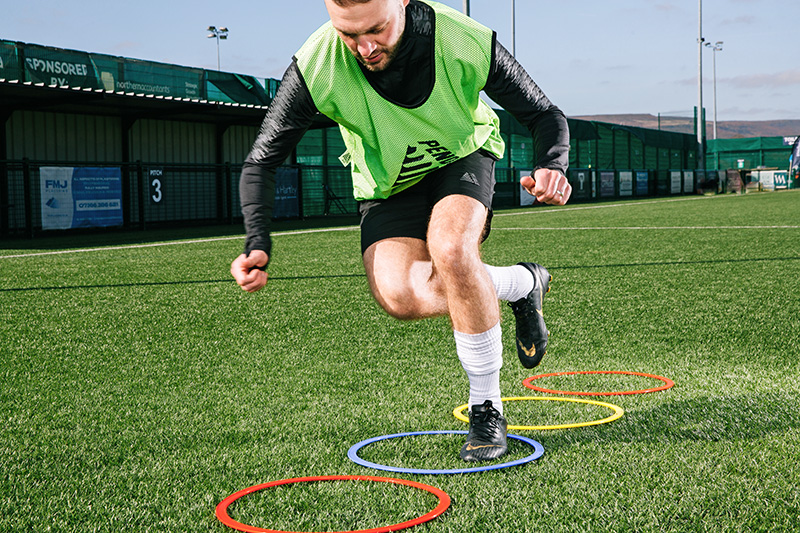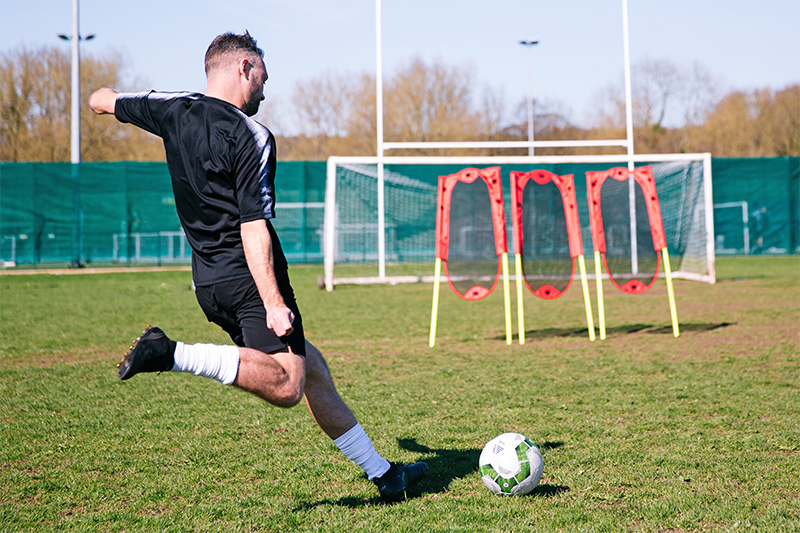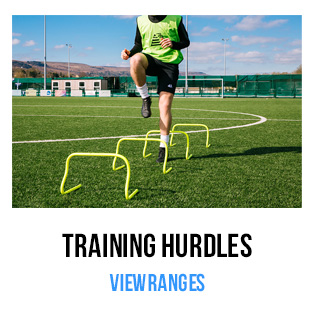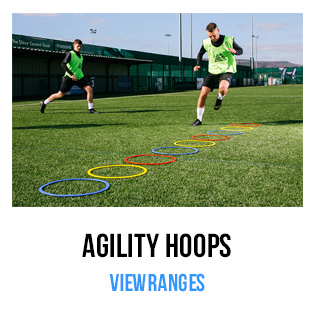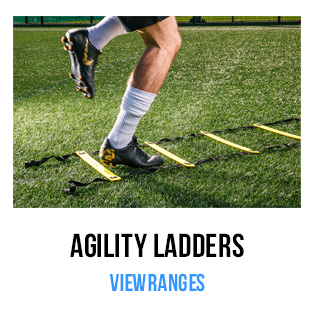Last Updated on: 6th February 2024, 11:16 am
What Is Plyometric Training?
Plyometrics For Football Players
Every football player wants to be faster but there is often a misconception about how best to improve speed. Many believe that the key to speed is fast. However, research shows that players who take fewer steps and have a longer ground contact time actually cover ground faster. The reason for this is power. The longer your foot is on the ground the more power you can put into it. So, strength and power are the keys to getting your speed up. This is where plyometric training comes in.
What Is Plyometric Training?
Plyometric exercises use explosive and fast movement to develop power in your muscles. They allow muscles to exert their maximum force in the shortest time possible. It helps with all aspects of a footballer’s performance.
When we say power, we’re not talking about strength. You’re not going to just start doing a few more squats to get power to your legs. Muscular power is determined by the time it takes to convert strength into speed. So, if you want to move across a football pitch quickly, you need power.
On the one hand, a bodybuilder has a great deal of physical strength and will be able to perform squats while carrying a heavy weight. On the other, they might not be able to jump as far as someone with less strength. The act of squatting is a slow movement. To jump, your muscles need to stretch and contract quickly.
The movement you make when going for a header is a plyometric movement. When going into a jump, you start with a downward thrust. You need to bend your knees if you want to get off the ground. That initial dip stretches the muscles that will be contracting to make the jump. The quicker the muscles contract after stretching, the higher the jump will be.
The 3 Stages
All plyometric movements involve three phases. These three phases are collectively known as the stretch-shortening cycle.
- The first phase is the pre-stretch or eccentric muscle action (preactivation). It is during this stage that elastic energy is generated and stored.
- The second phase is the time it takes for the pre-stretch to end and the concentric muscle action (stretch) to start. This transition period is known as the amortization phase. The shorter the second phase is, the more powerful the muscle contraction will be.
- The third phase is muscle contraction (shortening). This is the movement your player wants to make.
Plyometrics For Football
Plyometric training will help to condense the time your muscles need to apply the maximum force needed to perform a particular movement. A shorter time will translate into greater power with each muscle contraction.
To get a muscle to move, it first has to contract. If that muscle is lengthened beforehand, it will produce more force because it will have stored more elastic energy. Elastic energy is the internal energy that is converted into mechanical energy. This kind of explosive movement is required for many aspects of football.
Plyometrics can help with rapid changes in direction, sprinting, and kicking footballs. Playing a good quality long ball will be important for all players. You’ll have to take free kicks and play balls that need to travel long distances. Attackers will also need to strike high-speed shots, so kicking velocity and distance are important. Muscle power is vital when it comes to sprinting, stopping, cutting, and jumping.
Comparison With Other Sports
Plyometrics can be beneficial for all sports and the basic principles will remain the same for all athletes. However, certain areas will become more important depending on what your sport is. Football players will mainly want to focus on the lower body. They will be interested in:
- Explosive acceleration and deceleration
- Quick changes of direction
- Explosive forward springs
Forwards and strikers might also want to focus on vertical jumps and explosive shooting movements.
In comparison, rugby players will be interested in different areas. There will be some crossover between football and rugby but the demands of the sport are so different. As rugby is a contact sport, players will want to improve their:
- Lower body strength
- Stability
- Ability to absorb force.
They will also need explosive power for scrums and explosive jumping for lineouts.
As we mentioned, footballers will mainly focus on the lower body, but what about sports that place more demand on the upper body? Tennis or cricket players will be more concerned with throwing movements and focusing on their upper body. They will also want to strengthen their core to maintain balance and power during shots.
You can incorporate plyometrics into your training no matter what sport you play but it’s important to tailor it to your sport. Think about the movements you need during a match and pick exercises that will help you gain more power.
Does It Work?
There is plenty of scientific evidence suggesting that it does make a difference. Research carried out by the University of Nevada, Las Vegas also found that players were able to improve kicking distance thanks to low-intensity plyometric training. The results showed that both kicking distance and vertical jumping ability improved. By week 7, kicking distance had increased by 10% and improved by more than 27% by week 14. In week 7, their vertical jump had increased by 8% and was up by 19% at week 14. During this time, the control group’s kicking distance decreased and their vertical jump stayed the same.
Another study was carried out on 22 recreational football players. Half were subjected to a 6-week plan of plyometric training while the others weren’t. The study showed that the group going through training improved their agility and speed significantly. It shows that only a short plan can have a major effect on your performance. This is why so many professional clubs include some form of plyometric exercise in their regular training.
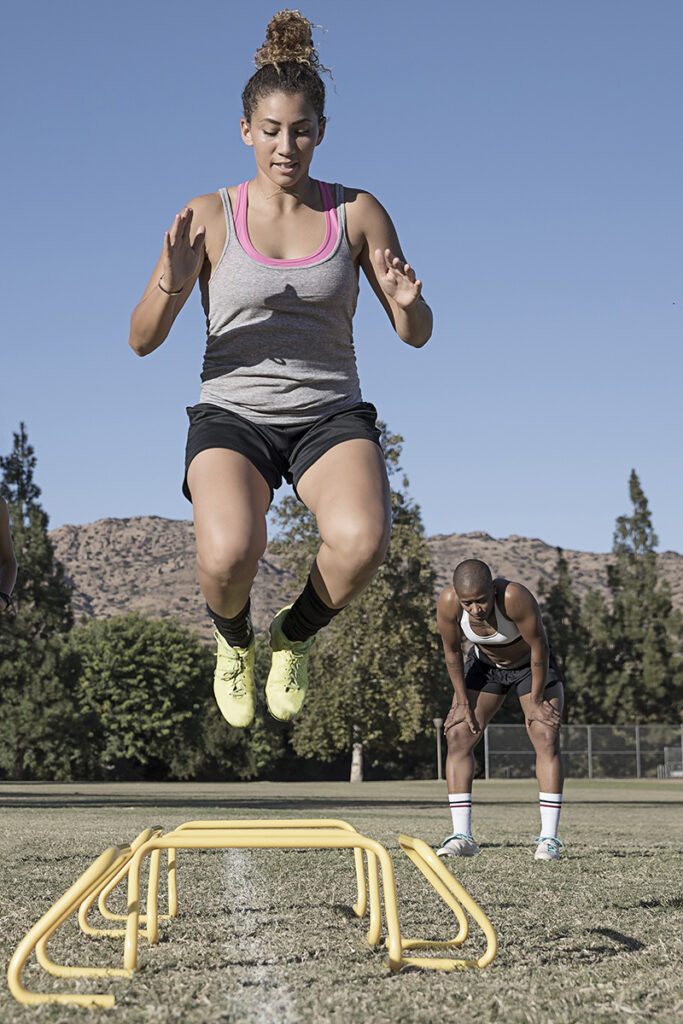
Useful Equipment
You don’t need to use equipment to introduce plyometrics into your training routine, but some pieces will help you include a wider range of exercises. These include:
You can shop for these items and more football training equipment on our website.
Safety Guidelines and Injury Prevention Tips
Plyometrics can certainly help your performance on the pitch but you need to know what you’re doing. If you add plyometrics to your training without planning, you risk injury. Here are some of our tips to ensure you can remain safe when adding plyometric exercises to your sessions.
- Volume and Frequency: Only a relatively small amount of plyometric training is required to help improve performance. Don’t push yourself/your players.
- Progression: Start with basic exercises and gradually progress to more advanced ones. This means your body will be able to adapt to the increased demands over time.
- Proper Technique: Ensure proper technique for each exercise to prevent unnecessary stress on joints and muscles. Ensure your body is properly aligned and focus on landing softly with knees slightly bent and tracking over the toes.
- Surface and Footwear: Do your plyometrics on softer surfaces, such as grass or dirt fields, as it will reduce unnecessary stress on your joints and knees. Wear supportive athletic shoes to provide stability and cushioning.
- Good Basis: It is vital to have a good strength base before you start. Plyometric movement converts strength into power, so it needs to be there.
- Warm-Up and Cool Down: As with all forms of exercise, it is vital to be thoroughly warmed up before engaging in plyometrics. Include dynamic stretching and light aerobic exercises. Also, a proper cooldown including static stretching will improve flexibility and reduce muscle tightness.
- Rest Intervals: Make sure you leave enough time to rest between sets and exercises. Your body will need time to recover from the explosive movements to prevent fatigue and maintain optimal power.
Common Mistakes To Avoid
If you want to make the most out of your plyometric training, you’ll want to avoid these common mistakes.
- Getting your jumps wrong: Jumping is one aspect of plyometric training but not every jump is plyometric. For it to count, your muscles need to go through the stretch-shortening cycle we described above. It’s all about time. Stepping off a box, landing on the floor and then jumping up as quickly as possible is a plyometric movement. The quick transition will target the stretch-shortening cycle.
- Lack of variety: There’s more to plyometric training than jumping. If you want to get the most benefit from your training, you should include lateral, rotational and multi-directional movements that mimic your movements on the pitch.
- Leaving plyometrics until the end: Carry out plyometrics at the start of your workout. These movements are explosive and will cause fatigue. To get the most out of them, you’ll want to perform them when you’re fresh and newly warmed up.
- Not mastering the basics: Don’t start with high-intensity plyometric exercises if you don’t know how to do the basics properly. Make sure you have proper technique for low-intensity jumps and movements before you think about moving ahead.
- Ignoring fatigue: To get the most out of plyometrics, you need explosive movements. If you carry on with plyometric training when you’re fatigued, it’s likely that you’ll have poor form and will increase the risk of injury.
Example Exercises
Jump Running
Try to get as much height and distance as you can with each stride.
Hurdle Training
Hurdles are a great piece of equipment for plyometric training. Check out our previous hurdle training drills post for ideas on useful drills.
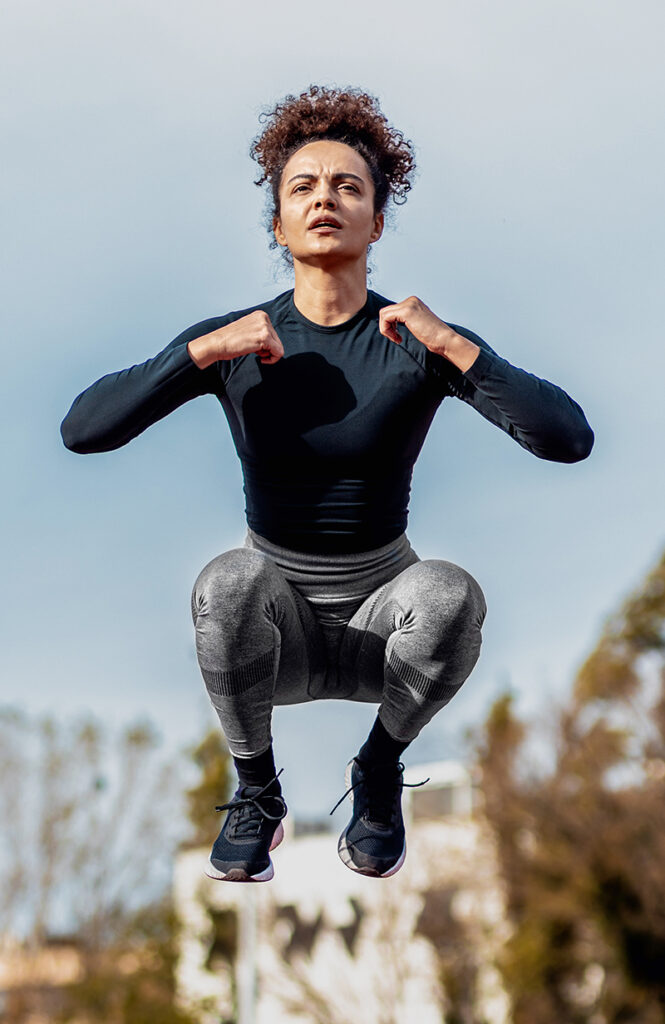
Tuck Jumps
Will improve your agility, strength, and stability. Helps you quickly change direction.
- Stand with your knees slightly bent and your feet shoulder-width apart.
- Bend your knees and jump up as high as you can. Bring your knees up towards your chest.
- Do 2 to 3 sets of 10 to 12 repetitions.
Stairway hops
- Start at the bottom of a staircase.
- Hop up the stairs on your right leg.
- Walk back down.
- Then do the opposite side.
Lateral bounds
This will help with your speed and jumping height. It will help increase your players’ speed.
- Start in a squat position, balancing on your right leg.
- Explosively jump as high and far to the left as possible.
- Land on your left leg in a squat position.
- Explosively jump as high and far to the right as possible.
- Land back in the starting position.
- Do 3 to 5 sets of 5 to 10 repetitions.
Box jumps
You’ll need something sturdy that you can jump on. It should be about 12 to 36 inches high. Start low and gradually increase the height. Increase the intensity by performing the exercise using one leg.
- From standing, squat down to jump onto the box with both feet.
- Lift your arms as you jump to gain momentum.
- Jump up and backward off the box, gently landing with bent knees.
- Do 2 to 3 sets of 3-5. Gradually increase the volume to increase intensity.
Depth Jumps
You’ll need something sturdy that you can stand on. It should be about 12 to 16 inches high to start with. Increase the height gradually
- Stand at the front edge of a box.
- Step off to land on the balls of the feet together.
- As you land, immediately explode into a jump.
- Start with about 2 to 3 sets of 3-5 repetitions. Increase volume gradually.
Sample Plyometric Training Plan For Football Players
Your training focus will differ depending on what time of year it is. In the off-season, you can focus on higher-intensity plyometrics. During the season your goal is to maintain explosive power without excessive fatigue. Take a look at our sample training plans below to see how easy it is to fit plyometrics into your training. These programs focus on developing explosive power, agility, and strength in the lower extremities.
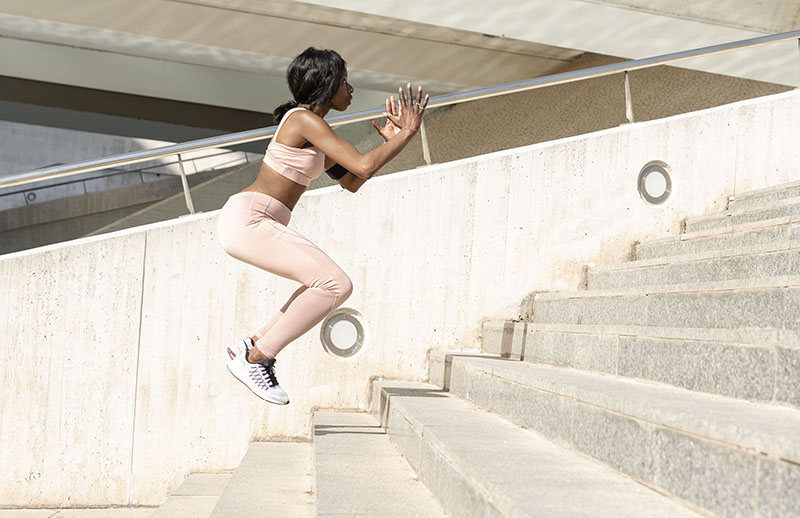
Offseason Plyometric Training Program (2-3 sessions per week)
Warm-Up:
- Light aerobic activity (jogging, skipping)
- Dynamic stretching (leg swings, hip circles)
- Plyometric-specific warm-up drills (low-intensity jumps and bounds)
Plyometric Exercises:
Box Jumps:
-
- Sets: 3
- Repetitions: 6-8
- Rest: 1-2 minutes
- Progression: Gradually increase box height
Depth Jumps:
-
- Sets: 3
- Repetitions: 6-8
- Rest: 2 minutes
- Progression: Increase box height or introduce variations (e.g. single-leg depth jumps).
Bounding Drills:
-
- Sets: 3
- Repetitions: 10-12 strides
- Rest: 1-2 minutes
- Progression: Increase distance or incorporate changes in direction.
Single-Leg Box Jumps:
-
- Sets: 2
- Repetitions: 5-6 each leg
- Rest: 1-2 minutes
- Progression: Gradually increase box height.
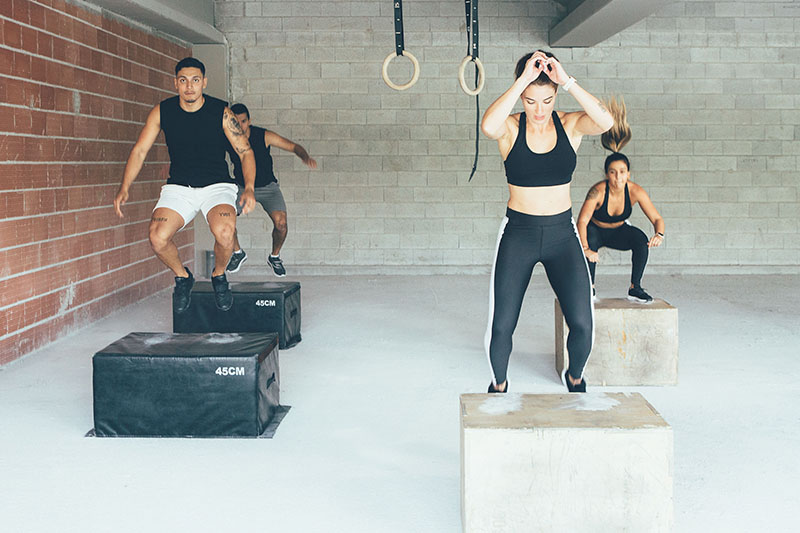
Squat Jumps:
-
- Sets: 3
- Repetitions: 10-12
- Rest: 1-2 minutes
- Progression: Add resistance (e.g., holding light dumbbells) or focus on explosive takeoffs.
Agility Ladder Drills:
-
- Sets: 2
- Repetitions: 1-2 minutes per drill
- Rest: 1-2 minutes
- Progression: Increase speed and complexity.
In-season Plyometric Maintenance Program (1-2 sessions per week)
Warm-Up:
- Light aerobic activity (jogging, skipping)
- Dynamic stretching (leg swings, hip circles)
- Light plyometric warm-up drills (low-intensity jumps and bounds)
Plyometric Exercises:
Box Jumps:
-
- Sets: 2
- Repetitions: 4-6
- Rest: 1-2 minutes
Depth Jumps:
-
- Sets: 2
- Repetitions: 4-6
- Rest: 2 minutes
Bounding Drills:
-
- Sets: 2
- Repetitions: 8-10 strides
- Rest: 1-2 minutes
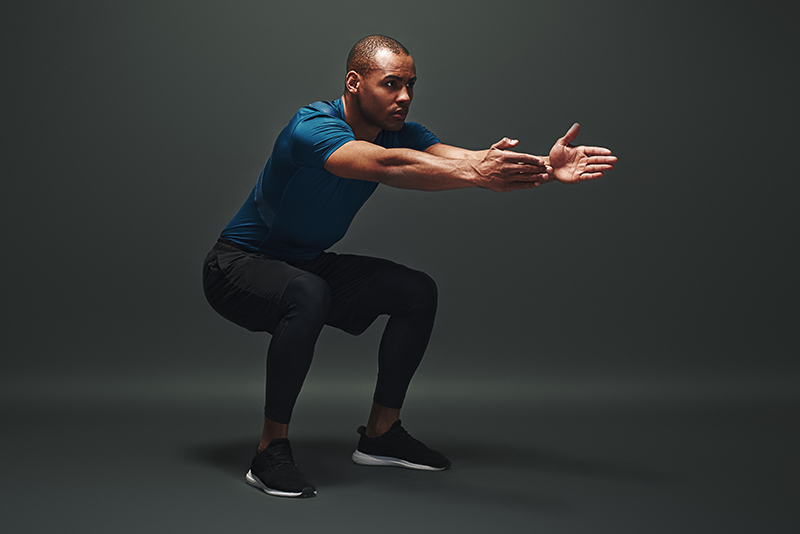
Single-Leg Box Jumps:
-
- Sets: 1
- Repetitions: 4-5 each leg
- Rest: 1-2 minutes
Squat Jumps:
-
- Sets: 2
- Repetitions: 8-10
- Rest: 1-2 minutes
Agility Ladder Drills:
-
- Sets: 1
- Repetitions: 1-2 minutes per drill
- Rest: 1-2 minutes
More Information
It’s always good to find out as much as you can before setting your players off on a new plyometric programme. Check out the following links for more helpful information.
Get Ready For Your Next Training Session
To get your players ready for their next match, you want to create a comprehensive football training programme. Having a good supply of great quality training equipment is only going to help your efforts. We offer more than just high-quality football kits. Be sure to check out Pendle’s range of training equipment so you have everything you need to help your players develop their skills.
Find The Best Deal For Your Club

